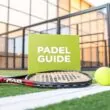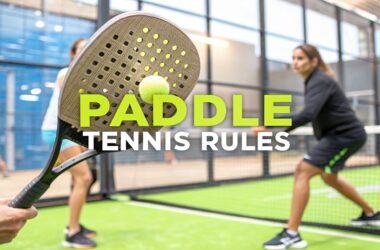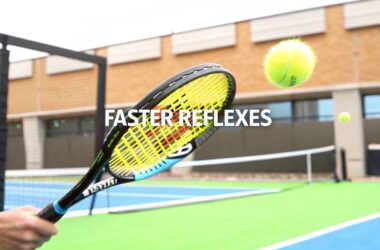Welcome to your definitive roadmap for padel excellence. If you're passionate about the sport but feel your progress has stalled, you've arrived at the right destination. To truly elevate your game, you must move beyond the fundamentals and embrace the specific skills that separate intermediate players from advanced competitors. This comprehensive guide is meticulously designed to provide actionable, in-depth strategies that will help you padel up your performance significantly.
We will break down eight critical areas of the game, transforming your approach from reactive to strategic. You will learn to master the nuances of wall play, develop the mental fortitude of a professional, and execute shots with newfound precision and confidence. We are moving past generic advice to give you concrete, implementable tactics. Each section offers practical examples and expert insights, giving you the tools to not just play, but to dominate the court. This is more than a list of tips; it's a structured training manual for players serious about improvement. Let's dive in and begin your journey to becoming a more skilled, strategic, and formidable padel player.
1. Master the Underarm Serve (Servicio por Debajo)
The serve in padel isn't about raw power like in tennis; it's a strategic shot designed to set up the point in your favor. Every rally begins with this underarm serve, known as the servicio por debajo, where you must bounce the ball once and strike it at or below waist level. Mastering this fundamental is the first crucial step if you want to padel up your game and dictate play from the very first shot.
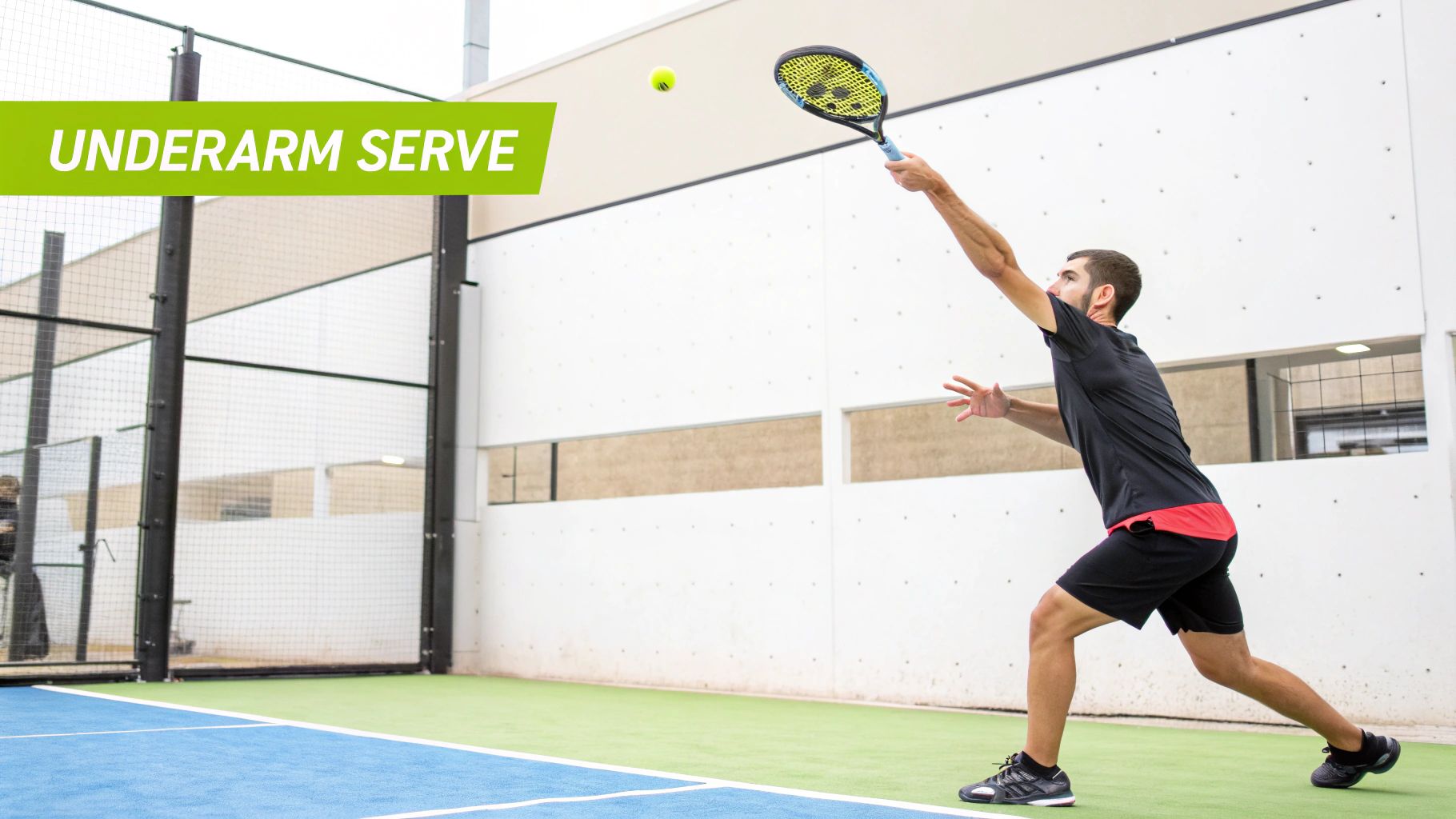

Buy the best padel gear to level up your next game!
CHECK OUT this deal from Padel Market!Get ready to take your game to the next level with the latest padel gear from Padel Market! Fast EU and Worldwide Shipping
While it seems simple, the underarm serve is a canvas for tactical creativity. Professional players like Fernando Belasteguín demonstrate how a well-placed slice serve can force an opponent out of position, opening up the court for the next shot. Similarly, Alejandra Salazar often varies the speed and depth of her serves, preventing opponents from finding a comfortable rhythm to attack.
How to Implement a Strategic Serve
To transform your serve from a simple point-starter into a tactical weapon, focus on variation and precision. Instead of hitting the same serve every time, develop a small arsenal of options.
- Vary Your Targets: Practice serving to the three key zones in the service box: the "T" (center line), the body, and the side glass. A serve into the glass can be particularly difficult for opponents to return effectively.
- Introduce Spin: A slice serve (or cortado) is your best friend. It keeps the ball low after the bounce and can skid off the side wall, making the return awkward. Focus on a "chopping" motion to impart this spin.
- Control the Speed: Mix up your pace. A slower, deeper serve can give you more time to get to the net, while a faster serve can jam the returner. The goal is to keep your opponent guessing.
By focusing on placement, spin, and speed, you gain control over the rally's opening moments. This strategic approach ensures you’re not just starting the point, but actively shaping it to your advantage. For a complete breakdown of the regulations, you can learn more about the official padel serve rules.
2. Perfect Your Wall Play and Rebounds
What truly separates padel from other racquet sports is the dynamic use of the surrounding glass walls. Wall play isn't just a defensive last resort; it's a fundamental strategic element for turning defense into attack and creating winning opportunities. Learning to read and utilize rebounds off the back and side walls is essential if you want to padel up and control the court from every position.
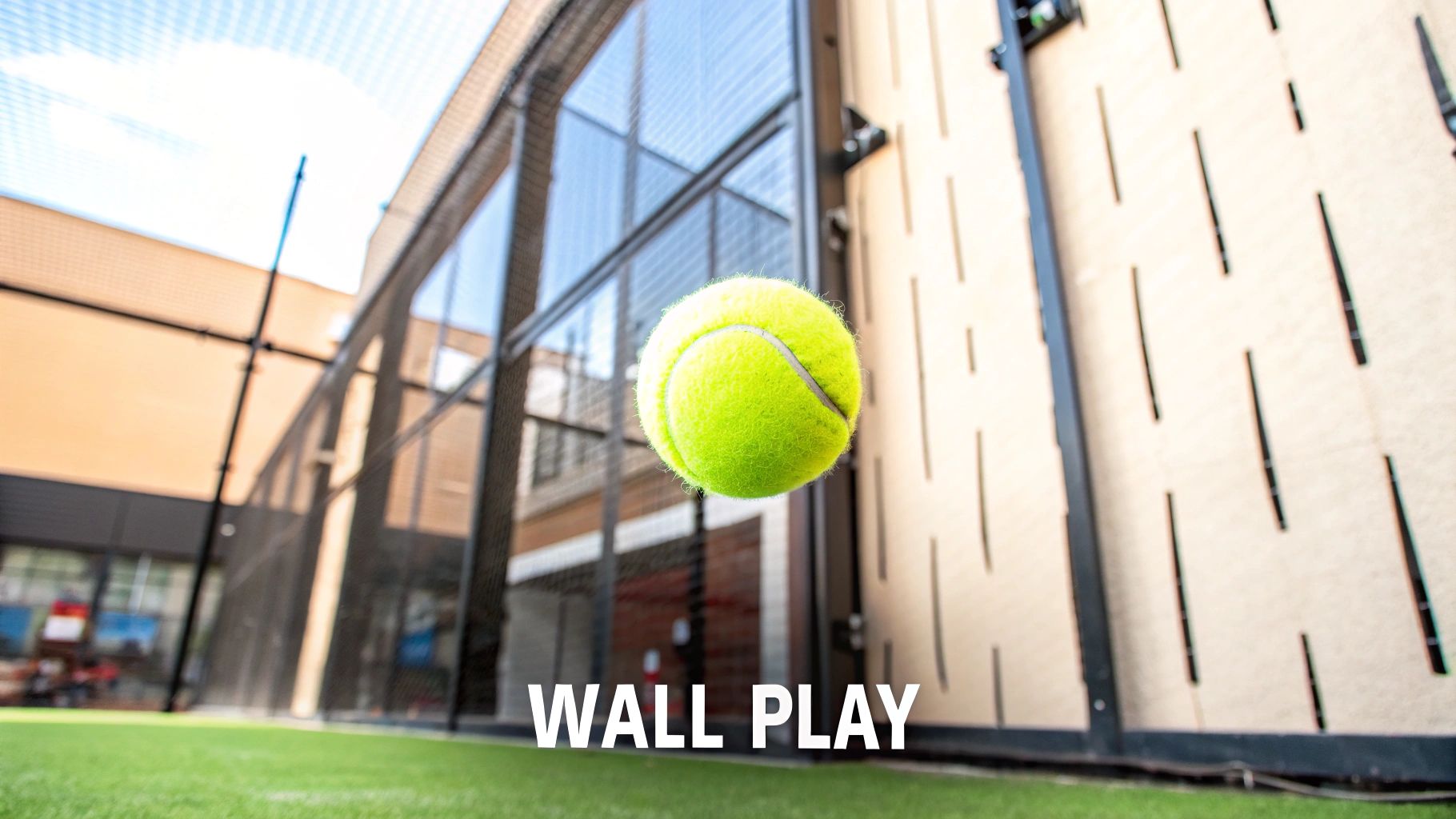
This skill transforms the entire dynamic of a rally, allowing players to buy time, reset their position, and launch counter-attacks from deep in their own court. Watch a player like Paquito Navarro, and you'll see how a seemingly lost point is converted into an offensive volley thanks to a perfectly executed shot off the back wall. Similarly, Paula Josemaría masterfully uses the side walls to create acute angles that are nearly impossible for opponents to reach.
How to Implement Effective Wall Play
To master the walls, you need to shift your mindset from simply returning the ball to strategically using the rebound. This requires practice in reading angles, speed, and spin to anticipate the ball's trajectory after it contacts the glass.
- Practice Back Wall Defense: Start by having a partner feed you balls that bounce off the back wall. Focus on letting the ball come off the glass, giving yourself space, and then playing a controlled shot like a lob (globo) or a low drive (bandeja) back to your opponents.
- Anticipate the Rebound: Pay close attention to the speed and spin of your opponent's shot. A hard, flat shot will come off the wall quickly and low, while a topspin shot might rebound higher and with more pace. Learn to adjust your position accordingly.
- Use the Side Walls Offensively: The side wall can be a creative tool. When pulled wide, instead of a desperate defensive slice, try hitting the ball into your own side wall to create a sharp, surprising cross-court angle that catches your opponents off guard.
- Master the Double Wall (Doble Pared): The corner shot, where the ball hits the side wall then the back wall, is one of the toughest to defend. Practice returning these by anticipating where the ball will end up and using a compact swing to direct it back over the net.
By embracing the walls, you add a new dimension to your game. You learn to stay calm under pressure, knowing you have more time and options than you think, which is a key step to taking full control of the match.
3. Develop Strategic Court Positioning
Padel is often described as a game of chess on a smaller court, and your positioning is how you control the board. Unlike tennis, where players cover vast distances, padel demands constant micro-adjustments and synchronized movement with your partner. Understanding where to be and when to move is fundamental if you want to padel up and transform your defensive reactions into offensive opportunities.
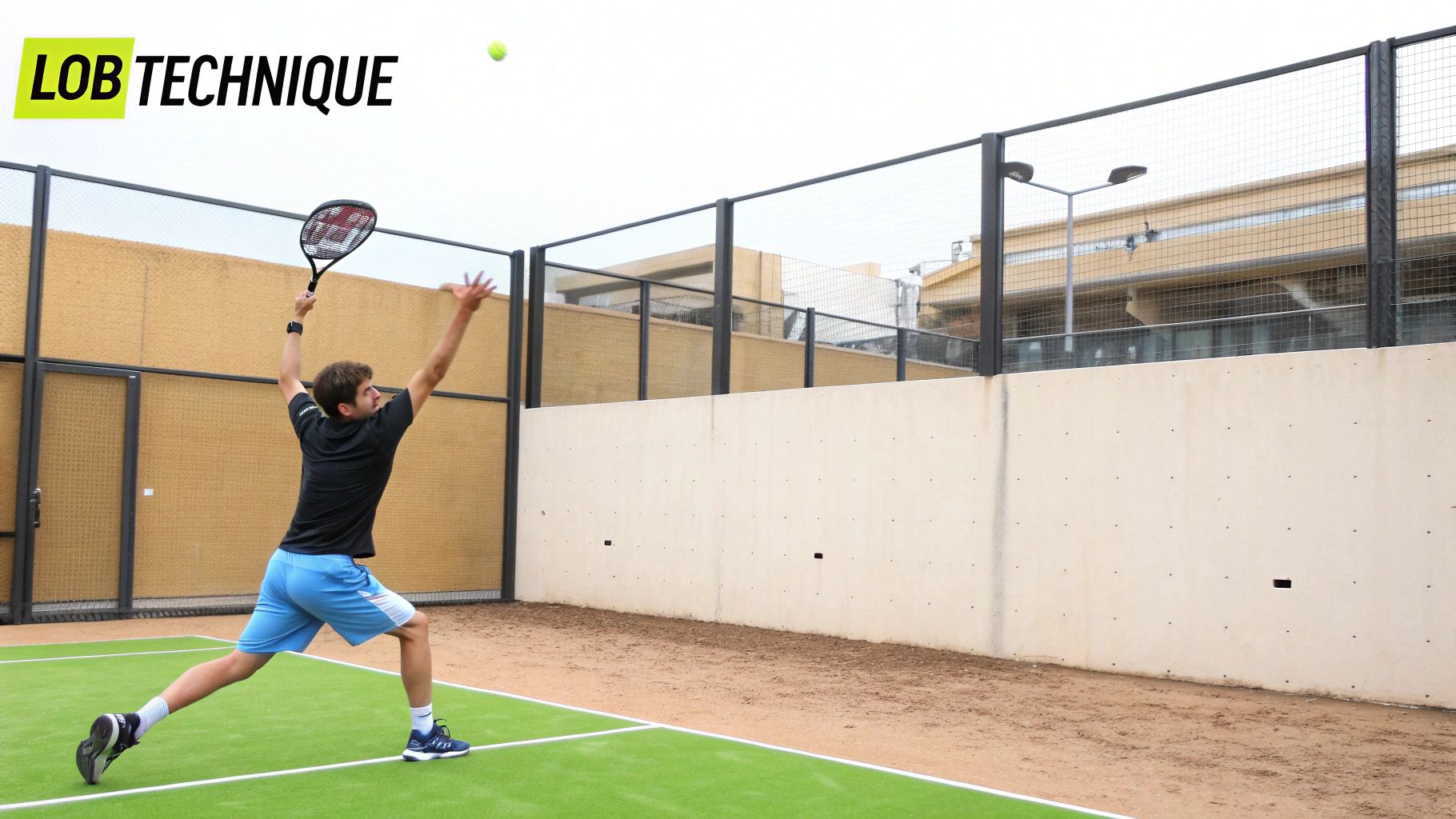
Effective positioning is a dynamic partnership, perfectly exemplified by the aggressive net dominance of former partners Juan Lebrón and Ale Galán. They moved as a single unit, pressuring opponents relentlessly. Conversely, the defensive prowess of duos like Gemma Triay and Lucia Sainz showcases how a solid baseline structure can absorb pressure and turn defense into a potent counter-attack, waiting for the right moment to seize the net.
How to Implement Strategic Positioning
To improve your court awareness, think of you and your partner as being connected by an invisible string. Your movements should be coordinated, ensuring you control key areas of the court together without leaving exploitable gaps.
- Move as a Unit: When you hit an attacking shot like a strong bandeja or smash, both you and your partner should advance toward the net. When forced into a defensive lob, you both retreat to the baseline. This prevents one player from being isolated.
- Maintain Parallel Formation: Whether at the net or the baseline, try to stay parallel with your partner. This covers the court evenly and makes it harder for opponents to find a winning angle between you.
- Master the Split-Step: Just before your opponent strikes the ball, perform a small hop or "split-step." This keeps you balanced and on your toes, dramatically improving your reaction time to either move forward, back, or sideways.
- "Wiper" Movement at the Net: When at the net, you and your partner should move laterally like windshield wipers, shifting together toward the side where the ball is. This coordinated movement cuts off angles and forces your opponents into difficult shots.
By focusing on synchronized movement and anticipating the play, you dictate the flow of the rally. Good positioning minimizes unforced errors and creates the pressure needed to force mistakes from your opponents, allowing you to control the point from start to finish.
4. Master the Lob (Globo) Technique
The lob, or globo, is arguably the most essential shot in padel, serving as a powerful tool for both defense and offense. It's the ultimate reset button, used to neutralize aggressive opponents at the net and buy yourself precious time to regain a dominant court position. Mastering the lob is a non-negotiable step if you truly want to padel up and control the rhythm of the game.
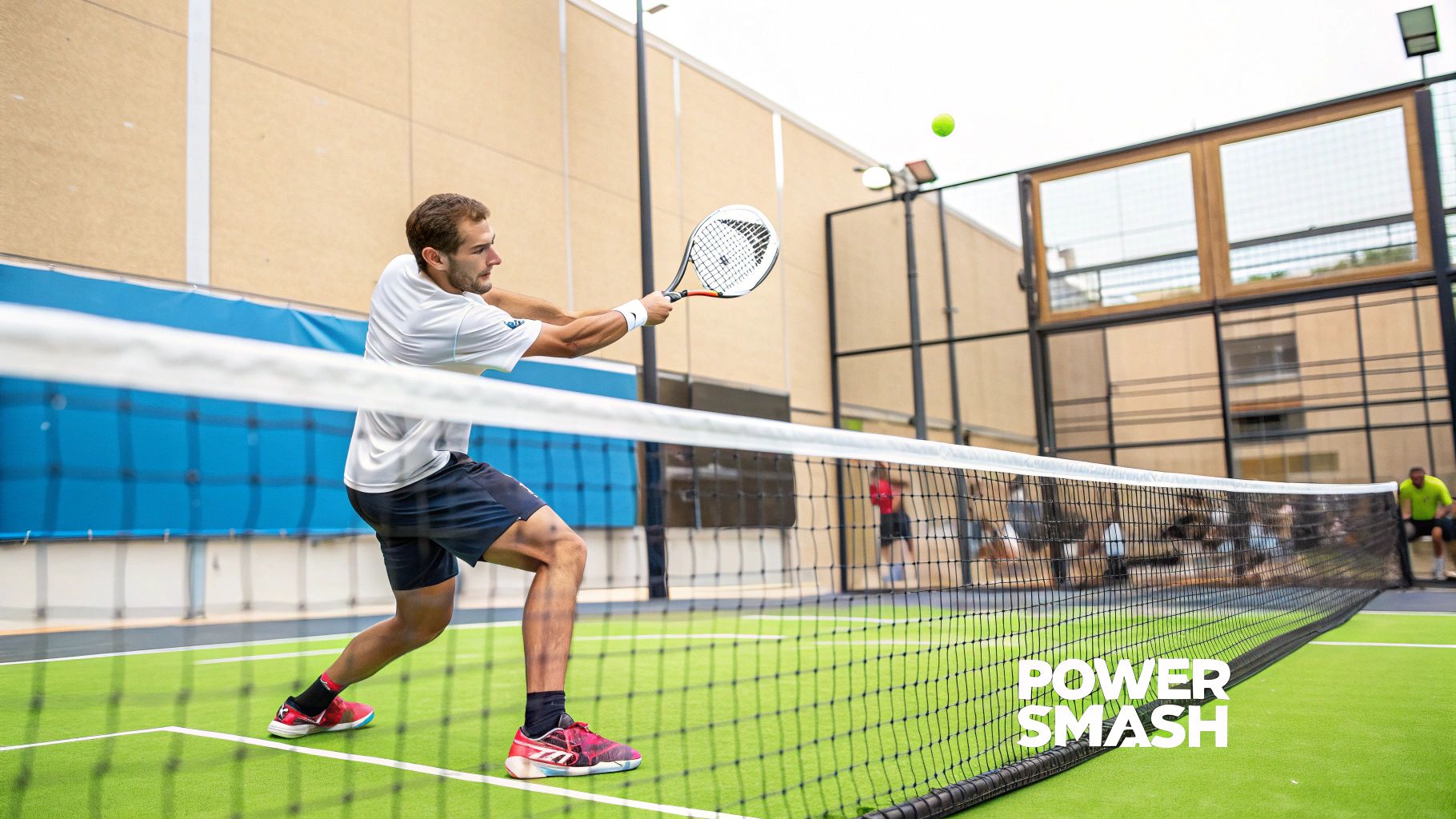
While its primary function is defensive, a well-executed lob can instantly turn the tables and create an offensive opportunity. Padel legends like Fernando Belasteguín are masters of the defensive lob, consistently placing the ball deep near the baseline to force opponents back. Conversely, players like Sanyo Gutiérrez often use the lob offensively, catching rivals off guard and setting up an easy smash on the return.

Buy the best padel gear to level up your next game!
CHECK OUT this deal from Padel Market!Get ready to take your game to the next level with the latest padel gear from Padel Market! Fast EU and Worldwide Shipping
How to Implement a Game-Changing Lob
To make your lob more than just a desperate defensive shot, focus on height, depth, and tactical awareness. A great lob doesn't just go over the opponent; it forces them into a difficult decision.
- Aim for Height and Depth: A common mistake is hitting a lob that is too low or too short, giving opponents an easy smash. Aim for the ball to peak at least 4-5 meters above your opponents' heads and land as close to the back wall as possible. This pushes them back and forces a weak return off the glass.
- Use Slice for Control: When you're under pressure, adding a slight slice or cortado to your lob can provide more control and keep the ball from bouncing too high off the back glass, making it harder for your opponent to attack.
- Follow Your Lob Forward: A successful lob is a signal to advance. As your opponents retreat to play the ball, you and your partner should move forward to take the net, seizing the attacking position you just created.
By developing a consistent and strategically placed lob, you gain the ability to dictate court positioning, neutralize threats, and create scoring chances from seemingly defensive situations. It's the shot that separates intermediate players from advanced tacticians.
5. Perfect Your Volleys at the Net
Dominating the net is a cornerstone of advanced padel, and the volley is your primary weapon for controlling this crucial territory. Unlike in tennis, where volleys are often about aggressive power, padel volleys demand a blend of touch, placement, and tactical intelligence. Mastering this shot allows you to finish points decisively and maintain offensive pressure, a non-negotiable skill if you truly want to padel up your game.
The volley is where the game’s best players separate themselves. Watch Ale Galán, who uses his volleys not just to hit winners, but to create sharp angles that force opponents into impossible defensive positions. Similarly, Ariana Sánchez showcases incredible finesse, using soft, well-placed volleys to find open spaces or drop the ball just over the net, leaving her rivals stranded.
How to Implement a Commanding Volley
To transform your net play from a defensive reaction into an offensive strategy, focus on control and tactical placement rather than brute force. A well-executed volley is about precision, not just power.
- Refine Your Technique: Use a continental grip for maximum versatility on both forehand and backhand volleys. Keep your paddle face slightly open and in front of your body, using a short, "blocking" motion. Avoid a big backswing; the power comes from your body weight moving forward, not from your arm.
- Focus on Placement Over Power: Your primary goal at the net is to make your opponent uncomfortable. Aim for the corners, the fence, or directly at your opponent's feet. A deep volley to the back glass can be just as effective as a sharp-angled winner.
- Practice Dynamic Drills: Engage in volley-to-volley exchanges with a partner to improve your reaction time and consistency. Also, have a partner at the back of the court feed you balls so you can practice transitioning from defensive to offensive volleys.
By developing a nuanced and precise volley, you gain the ability to dictate the flow of the rally from the most dominant position on the court. This control is essential for closing out points and establishing yourself as a formidable net presence.
6. Develop Effective Smash Variations
The smash, or remate, in padel is one of the most decisive and exciting shots, but it's far more nuanced than simply hitting the ball hard. Due to the glass walls, a poorly executed power smash can rebound perfectly for your opponents, turning your attack into their advantage. To truly padel up and dominate from an overhead position, you must develop a versatile arsenal of smashes suited for different situations on the court.
This shot isn't just about ending the point; it's about making the right choice to maintain pressure. Top players like Juan Lebrón are famous for their powerful flat smashes (remate por tres) that send the ball out of the court, while Paquito Navarro often uses a wicked slice smash (vibora) to create unpredictable, low bounces that die in the corners. These variations are essential for converting offensive opportunities into points.
How to Implement Different Smashes
Moving beyond a single, all-purpose smash requires understanding when and how to deploy different techniques. Focus on reading the ball and your opponents' positioning to select the optimal shot.
- The Flat Smash (Remate Plano): This is your power shot, designed to win the point outright. Use it when you are close to the net with a high, easy ball. The goal is to make the ball bounce high off the back wall, making it unreturnable, or even sending it out of the court.
- The Slice Smash (Vibora): When you are further back or off-balance, the vibora is your best friend. Strike the side of the ball with a cutting motion to impart heavy slice. This keeps the ball low and fast after it hits the glass, forcing opponents to dig it out.
- The Kick Smash (Rulo): A more advanced shot, the rulo involves using topspin and kick to make the ball jump off the back wall unpredictably, often over the opponent's head or sideways into the fence. It's a fantastic tool for creating chaos and confusion.
By learning to execute these different smashes, you can turn any lob into an offensive opportunity. The key is to assess your position, the ball's height, and your opponents' location before deciding which remate will be most effective. This tactical depth is what separates good players from great ones.
7. Build Strong Communication and Teamwork
Padel is fundamentally a doubles game, meaning your success is intrinsically linked to your partner's. Raw talent alone is not enough; seamless communication and synchronized teamwork are what separate good pairs from great ones. Developing this on-court chemistry is a non-negotiable step if you truly want to padel up and start winning more matches.
The best teams in the world, like the former dominant partnership of Juan Lebrón and Ale Galán, move as a single, cohesive unit. Their unspoken understanding, built over thousands of hours, allows them to anticipate each other's movements and cover the court flawlessly. Similarly, Gemma Triay and Lucía Sainz showcased how a clear tactical communication system can dismantle opponents with precision and strategy.
How to Implement Effective Teamwork
Transforming your partnership from two individuals into a unified team requires deliberate practice and clear agreements. The goal is to make your movements and decisions predictable to each other but unpredictable to your opponents.
- Develop Clear Calling Systems: Establish simple, consistent calls for key situations. A quick "yours," "mine," or "leave" on balls down the middle prevents confusion and hesitation. For lobs, decide who covers based on court position and communicate early.
- Move as a Cohesive Unit: Practice shadow drills where you and your partner move together, maintaining proper spacing. When one player moves forward to attack, the other should adjust their position to cover the open court, and vice versa.
- Pre-determine Middle Balls: Before the match, decide who takes the shots that come down the center of the court. Typically, the forehand player (the one with the forehand in the middle) takes these shots, but this agreement eliminates in-the-moment indecision.
- Offer Constructive Support: Acknowledge your partner's good shots and offer encouragement after a mistake. Maintaining a positive emotional connection on the court is just as important as tactical execution.
By building this foundation of communication and trust, you create a synergistic partnership that is greater than the sum of its parts. This is the essence of high-level padel. For players looking to deepen their strategic understanding, exploring padel coaching resources can provide invaluable insights into team dynamics.
8. Master Mental Game and Match Strategy
Padel is as much a mental battle as it is a physical one. The sport's unique scoring and the long, grueling rallies demand immense mental fortitude and strategic awareness. Understanding how to manage pressure, stay focused, and adapt your tactics mid-match is what separates good players from great ones and is essential to padel up your competitive level.
Legends of the sport exemplify this mental toughness. Fernando Belasteguín is renowned for his unyielding resilience in crucial moments, often turning the tide of a match through sheer willpower and tactical intelligence. Similarly, Gemma Triay’s calm demeanor and strategic game management allow her to out-think opponents in high-stakes finals, proving that a sharp mind is as powerful as a powerful smash.
How to Implement a Stronger Mental Game
Building mental resilience and strategic depth requires conscious practice, both on and off the court. To truly excel, a strong mental approach is essential. For further insights into the psychological aspects of sports, consider exploring resources on mastering the mental game.
- Develop Pre-Point Routines: Create a consistent routine before each point, like bouncing the ball a specific number of times. This simple ritual helps reset your focus and brings a sense of control and consistency to your game.
- Focus on Process, Not Outcome: Instead of worrying about winning or losing the point, concentrate on executing your strategy. Focus on your footwork, your shot selection, and your communication. This process-oriented mindset reduces pressure and improves performance.
- Learn to Reset After Each Point: Whether you win or lose a point, learn to leave it behind. A short memory is a major asset in padel. Acknowledge the result, take a deep breath, and immediately shift your focus to the next point.
By strengthening your mental game, you gain a critical edge. A robust strategy combined with mental toughness allows you to stay composed under pressure and make smarter decisions when it matters most. For more foundational knowledge to build your strategy upon, learn more about the fundamentals of how to play padel.
Padel Skills Comparison Matrix
| Technique/Skill | Implementation Complexity 🔄 | Resource Requirements ⚡ | Expected Outcomes 📊 | Ideal Use Cases 💡 | Key Advantages ⭐ |
|---|---|---|---|---|---|
| Master the Underarm Serve | Medium – Requires precise underhand technique | Low – Basic equipment and practice | Consistent serve with control and placement | Starting points, controlling rally pace | Control & placement, less physical demand |
| Perfect Your Wall Play and Rebounds | High – Mastering rebounds from different walls | Medium – Practice on various walls | Extended rallies, creative shot-making | Defense/offense using walls, tricky angles | Adds 3D play, extends rallies |
| Develop Strategic Court Positioning | Medium – Requires partner coordination | Low – Mostly movement drills | Better court coverage and quick transitions | Doubles play positioning, attacking/defense | Maximizes coverage, creates better angles |
| Master the Lob Technique | Medium – Requires height and precision | Low – Practice with partners | Neutralizes attacks, forces weak returns | Defensive/offensive point transition | Buys time, creates attacking opportunities |
| Perfect Your Volleys at the Net | Medium – Quick reflexes and touch required | Low – Net play drills | Immediate point finishing, offensive pressure | Net play, closing points | Maintains offensive position, pressure |
| Develop Effective Smash Variations | High – Variety of smashes need timing and power | Medium – Physical conditioning | Powerful point finishing and offensive dominance | Finishing points, attack/defense transition | Psychological pressure, versatile finishes |
| Build Strong Communication & Teamwork | Medium – Needs consistent practice and understanding | Low – Focus on partner interaction | Efficient court coverage, fewer errors | Doubles games, tactical court coverage | Builds trust, reduces confusion |
| Master Mental Game & Match Strategy | High – Demands mental resilience and tactical skill | Low – Mental exercises and routines | Consistent performance under pressure | Competitive and high-stakes matches | Mental toughness, strategic advantage |
Your Next Move: Putting These Padel Skills into Practice
You have now explored the eight pillars that form the foundation of a formidable padel game. From mastering the often-underestimated underarm serve to fortifying your mental game, each strategy we've discussed is a critical component in your journey to padel up. This isn't just a collection of tips; it's a comprehensive blueprint for transforming your performance on the court, moving beyond basic play to strategic, intentional, and dominant padel.
The true value of this guide lies not in simply reading it, but in its active application. The path to improvement is paved with deliberate practice and focused effort. Instead of trying to implement all eight strategies at once, which can lead to feeling overwhelmed, select one or two areas that represent your biggest opportunities for growth.
Creating Your Padel Up Action Plan
To make your progress tangible, consider this structured approach:
- Focus on Foundational Skills First: Is your wall play inconsistent? Dedicate your next few practice sessions exclusively to mastering rebounds. Drill how the ball comes off the back and side glass until reading its trajectory becomes second nature.
- Pair Complementary Skills: Combine your practice of net volleys with strategic court positioning. As you sharpen your reflexes at the net, simultaneously work on your split-step and your ability to anticipate your opponents' shots, creating a powerful offensive and defensive combination.
- Integrate One New Strategy Per Match: Before your next friendly game, commit to perfecting your lob. Make it your primary goal to use the globo not just defensively to buy time, but offensively to push your opponents back and seize control of the net. This focused, one-skill-at-a-time approach is how you truly padel up your game.
The Bigger Picture: From Individual Skills to Match Dominance
Remember, each element builds upon the others. Strong teamwork and communication are useless without solid individual techniques, and the most powerful smash is ineffective without the strategic positioning to set it up. The ultimate goal is to weave these distinct skills into a seamless, instinctual style of play. This synergy is what separates good players from great ones.
Your journey to becoming a better padel player is a continuous cycle of learning, applying, and refining. Embrace the process, celebrate small victories, and stay patient with yourself. Every well-placed lob, every perfectly executed volley, and every successful defensive stand against the glass is a step forward. You now have the knowledge and the tools; the next move is yours.
Ready to dive deeper and stay ahead of the curve? For expert gear reviews, professional match analysis, and exclusive insights that will help you continue to padel up, visit Padel Rumors. Explore our resources at Padel Rumors and join a community dedicated to mastering the world's fastest-growing sport.







